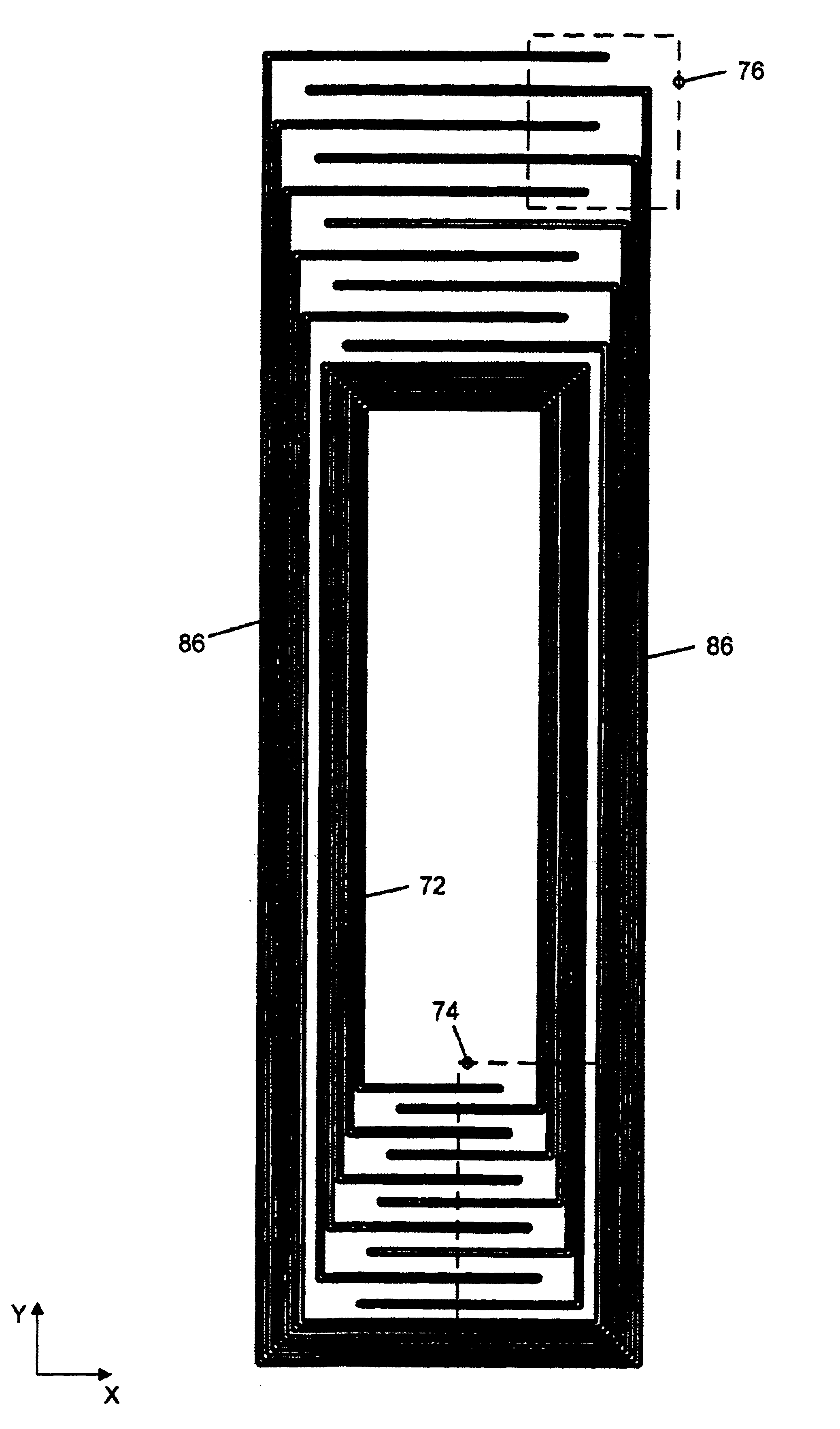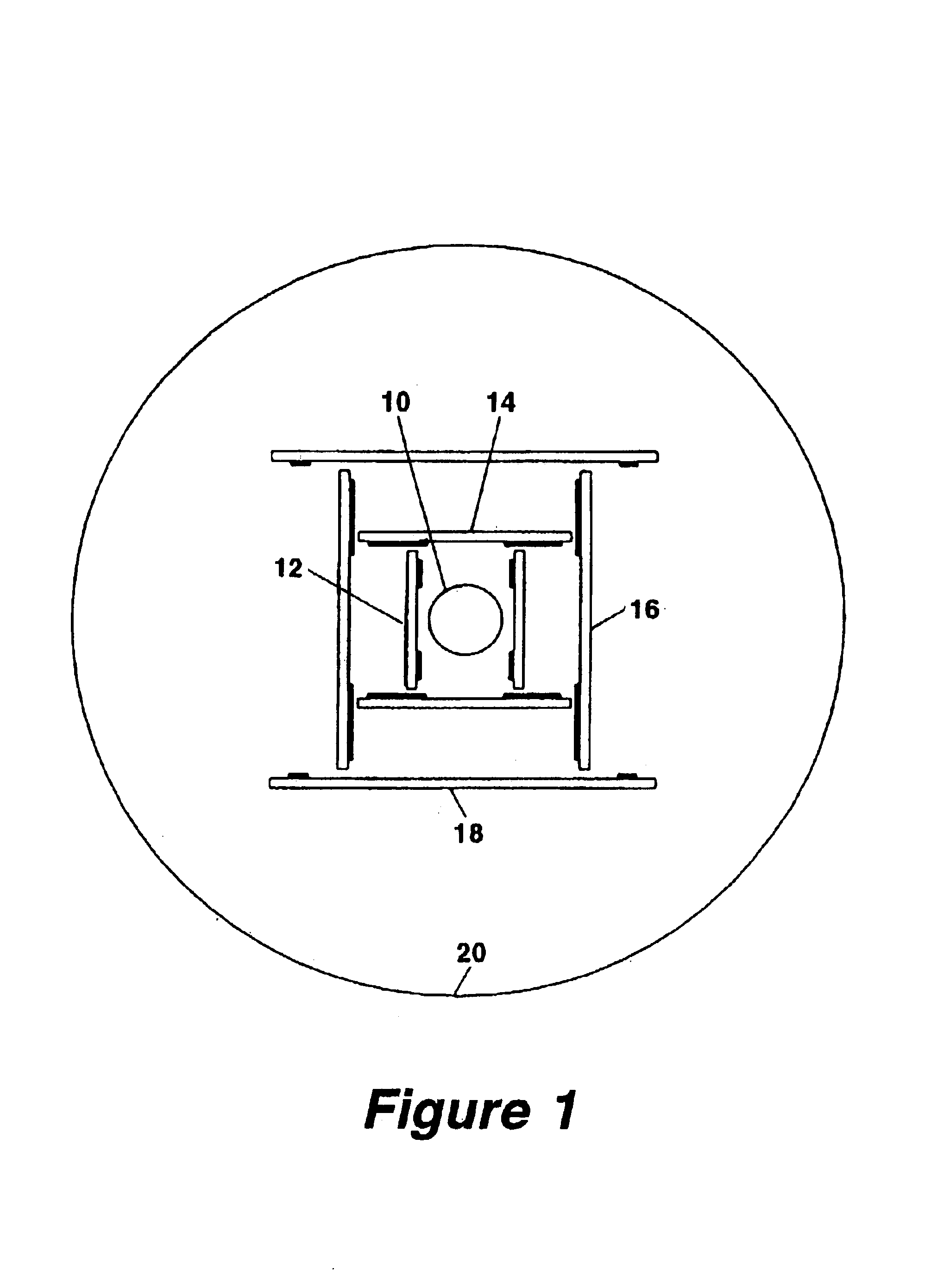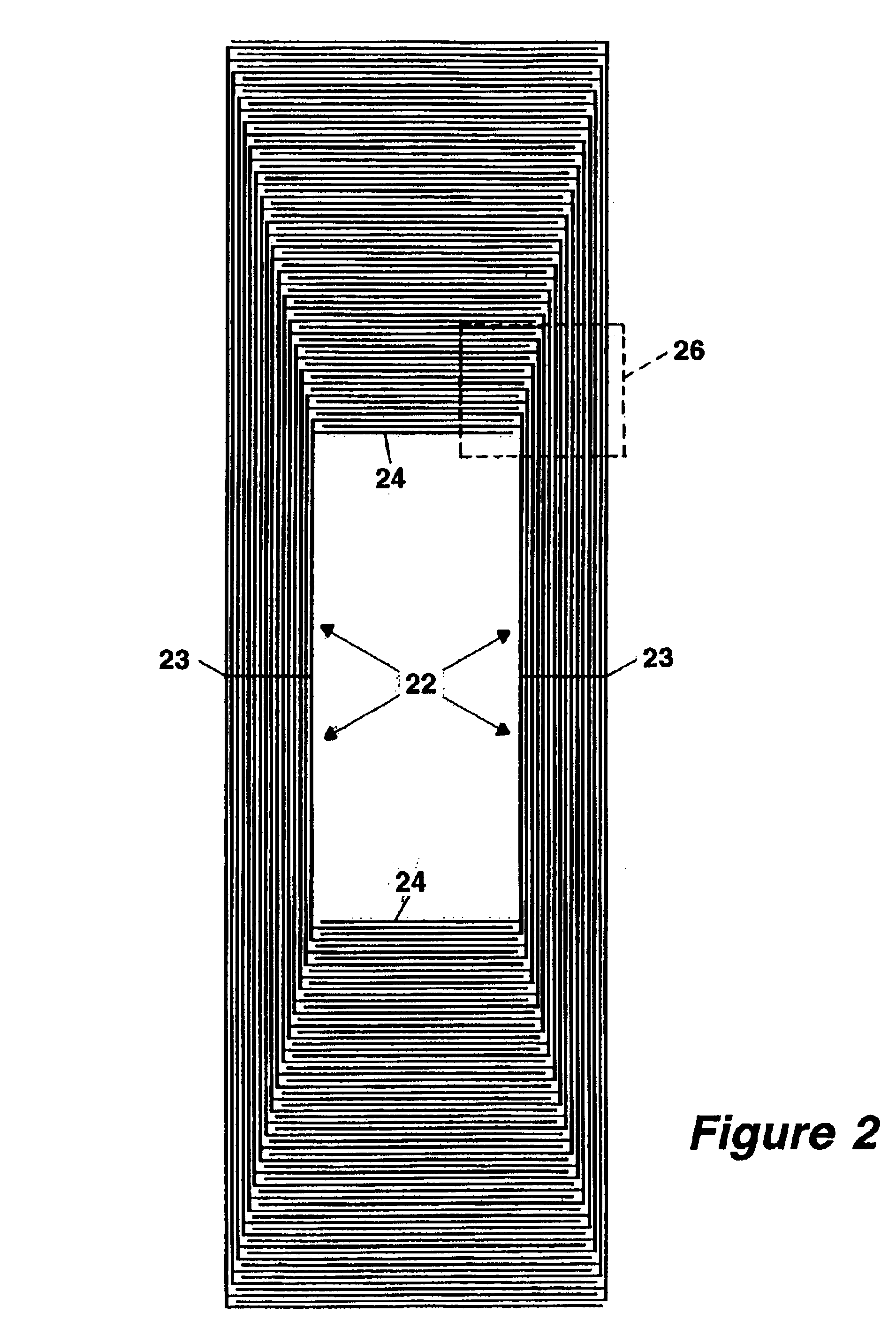Planar NMR coils with localized field-generating and capacitive elements
a capacitive element and field-generating coil technology, applied in the field of rf probes, can solve the problems of limited resistance of these coil materials, limited sensitivity of conventional normal-metal coils, and only realizing the advantage, so as to minimize the chance of discharge
- Summary
- Abstract
- Description
- Claims
- Application Information
AI Technical Summary
Benefits of technology
Problems solved by technology
Method used
Image
Examples
second embodiment
the present invention is shown in FIGS. 3 and 3A. As with FIGS. 2 and 2A, for illustrative purposes, FIGS. 3 and 3A show many fewer conductors than exist in the actual coil. The coil of this embodiment has four capacitors in series, two above the active sample volume and two below. A coil with this configuration may be useful, for example, to excite and detect 1H nuclei at 600.13 MHz in a 3-mm tube in a 14.1-Tesla magnet. A coil for detecting 1H (sometimes referred to as a “proton” coil) is often the innermost coil in a probe, since proton detection is quite often considered the most important. Since the resonant frequency necessary for proton detection is significantly higher than that for almost all other isotopes, particular design constraints on the coil exist. Because the necessary resonant frequency is higher, the total capacitance may be lower. This, in turn, allows the use of more capacitors and, as shown in FIG. 3, the example coil has four capacitors in series.
The voltage ...
PUM
 Login to View More
Login to View More Abstract
Description
Claims
Application Information
 Login to View More
Login to View More - R&D
- Intellectual Property
- Life Sciences
- Materials
- Tech Scout
- Unparalleled Data Quality
- Higher Quality Content
- 60% Fewer Hallucinations
Browse by: Latest US Patents, China's latest patents, Technical Efficacy Thesaurus, Application Domain, Technology Topic, Popular Technical Reports.
© 2025 PatSnap. All rights reserved.Legal|Privacy policy|Modern Slavery Act Transparency Statement|Sitemap|About US| Contact US: help@patsnap.com



